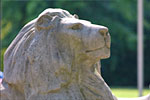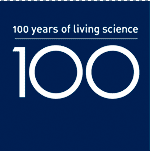Cedric Turner
(Mechanical Engineering, 1976-1991)
Recollections of Strength of Materials in the
Mechanical Engineering Department
The Experimental Age of "Strength of Materials"
Read the account in full [pdf]
Professors W.C. Unwin and W.E. Dalby, the first two heads of the Mechanical Engineering Department and, and also Deans of the City and Guilds College, were both experimentalists in the field of Strength of Materials. This account is a brief history of the continuation of that tradition during the following tradition during the following one hundred years, albeit with experimental work reducing greatly with the coming of computer modelling from about 1970 onwards. In the first two or three decades of the 20th century, research in the Department seemed confined mainly to professorial staff with apparently little added to the laboratory equipment with which the College was set up. But with the coming of a thermo-dynamicist, Professor Owen (later Sir Owen) Saunders as Head of Department at the end of the Second World War, this changed as new staff were encouraged to both teach and conduct research and new equipment became available. This change spread to materials, or more exactly, to Applied Mechanics, with the appointment in 1948 of Dr Hugh (later Professor Sir Hugh) Ford as Reader in that subject. For the Strength of Materials section of his brief, within a few months he had obtained several items of more modern equipment, notably a 50t (c.500kN) capacity hydraulically driven ‘universal’ testing machine with a mechanical self-indicating load measuring system and a small cold-rolling-mill with a 2t (c.20kN) bench mounted testing machine to serve with it. Several new members of staff and researchers were at once busy starting projects on this equipment.
All this received a major boost when in about 1955, some years before the Robbins report and the general expansion of universities, Imperial College was singled out to expand several-fold by rebuilding most of its facilities, including all the engineering departments. This account gives my recollections of that time as lived through over a period of 12 years during which the Mechanical Department was re-built in four three-year stages whilst starting to expand both undergraduate, post-graduate and of course staff numbers. There were then a few halcyon years from 1967 when the hustle and bustle of the building work was finished and new courses and researches set up as student numbers reached their targets. Experimental stress analysis, plasticity and metal forming, fatigue, creep and work on the fracture of steel, all flourished and polymer studies were introduced. But within another few years the monies available began to reduce, with the introduction of norms for space and cost as the national burden of running so many new institutions of higher education began to be felt. In Materials, the major developments in the 1960s and ‘70s were the coming of polymers into a hitherto metals world, of computing for stress analysis and of fracture mechanics in the study of the failure modes of metals. This discipline soon encompassed fracture, fatigue and creep crack growth and was adopted for studies in polymers on all these topics and environmental cracking. By the mid-1980s with the re-organisation of several major industries and the demise of much research effort into nuclear reactors, the metals work greatly declined though polymers now encompassing composites and adhesives, grew strongly. This overall reduction in the work in Materials ‘bottomed out’ in around 2000 and there are now strong signs of a renaissance, albeit with few undergraduate laboratories. In research, the emphasis is on computer modelling for mechanics of materials of all types, with some strong and well equipped research labs.
Addendum:The attached pdf article 'The experimental age of strength of materials' was completed in December 2007. The last pictures shown were of some quite extensive alterations being made at Level 1 of the east end of the present E3 building, to accommodate a re-born Fatigue and Impact laboratory, the main facility remaining for any experimental research work in Mechanics of Materials. By January 2008 that plan was out of date. It is still intended that the laboratory be moved to allow for the major rebuilding work planned for near its present site, but it seems that its re-birth elsewhere may be more difficult than at first envisaged.
© 2007 Imperial College London

Through the first decade of the twenty-first century the campaign seeks to philanthropically raise £207 million from Imperial’s alumni, staff and friends, and donations from charitable foundations and industry.
Where your support can make a differenceGive now

Imperial’s Centenary Year provides an opportunity to recognise and celebrate members of the Imperial community.
View staff and student portraits
